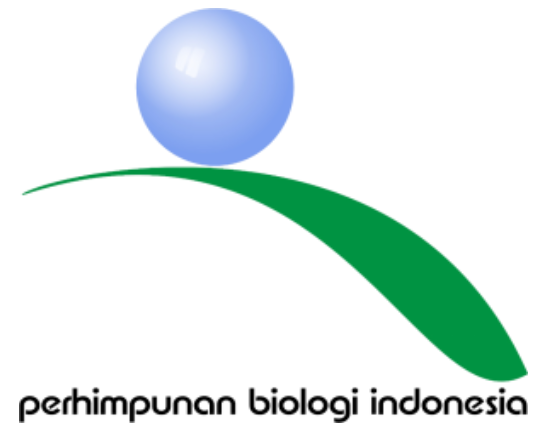Antibacterial Activity of Green Meniran Extract (Phyllanthus niruri Linn) on The Growth of Salmonella typhimurium
DOI:
https://doi.org/10.21831/ijobi.v1i2.215Keywords:
Meniran green, extract, Salmonella typhimurium, antibacterial, disc diffusionAbstract
Salmonella typhimuriumis a bacterium that causes digestive infections, gastroenteritis, and food poisoning, psickcaused byBacterial infection is a health problem in developing countries, including Indonesia. Green meniran (Phyllanthus niruri L.), is a herbaceous plant containing flavonoids, alkaloids, saponins, and tannins which have antibacterial activity which is expected to suppress the development of Salmonella sp. The aim of the study was to determine the ability of green meniran extract as an antibacterial to inhibit the growth of Salmonella typhimurium bacteria. The study used a completely randomized factorial design consisting of two factors, namely extract concentrations of 5%, 10%, 20%, 40%, 80%, equipped with a positive control (chloramphenicol) and negative control (aquades), as well as the age of the inoculum of the bacterial growth phase. Testing the antibacterial activity using the Kirby-Bauer disc diffusion method. The results showed that green meniran extract had antibacterial activity against the growth of Salmonella typhimurium bacteria. Concentrations of 5%, 10%, 20%, 40%, and 80% produced inhibition zone diameters of 6.7 mm, 8.5 mm, 9.9 mm, 12 mm, and 14.6 mm, respectively. The concentration of 80% green meniran extract is effective in inhibiting the growth of Salmonella typhimurium bacteria with an antibacterial effectiveness value of 58.95%.
Downloads
References
Ajizah, A. (2004). Sensitivity of Salmonella typhimurium to Psidium guajava LJ Leaf Extract Bioscientiae, 1 (1): 31-38.
Aziz. (2017). Effectiveness of Inhibitory Power of Tiwai Onion (Eleutherine americana) Extract on the Growth of Aeromonas hydrophila Bacteria in Vitro. Journal of Harpodon Borneo, 10 (1): 68-74.
Brook, GF, Butel, JS, and Morse, SA (2013). Medical Microbiology. New York: Salemba Medika.
Das, K., RKS Tiwari, and DK Shivastava. (2010). Techniques for Evaluation of Medical Plant Products as Antimicrobial Agents: Current Methods and Future Trends. Journal of Medicinal Plants Research, 4(2): 104-111.
Fardiaz, S. (1992). Food Microbiology. Jakarta: Gramedia Media Utama. Ganiswarna, VHS (1995). Pharmacology and Therapy. Jakarta: Department of Pharmacology, Faculty of Medicine, University of Indonesia.
Jawetz, E., Melnick, JL, and Adelberg, EA (2004). Medical Microbiology. Jakarta: EGC.
Mangunwardoyo, W., Cahyaningsih E., and Age T. (2009). Extraction and Identification of Meniran (Phyllanthus niruri L.) Antibacterial Compounds. Indonesian Pharmaceutical Sciences, 7 (2): 57-63.
Munfaati, PN, Evie R., and Guntur T. (2015). Activity of Antibacterial Compounds Meniran Herb Extract (Phyllanthus niruri L) on the Growth of Shigella dysenteriae Bacteria in Vitro. Bio Lantern Journal, 4(1): 64–71.
Nuria, Maulita Cut, Faizaitun, Arvin, Sumantri. (2009). Antibacterial Activity Test of Ethanol Extract of Jatropha Leaves (Jatropha curcas L.) against Staphylococcus aureus ATCC 25923, Escherichia coli ATCC 25922, and Salmonella typhi ATCC 1408. Mediagro, 5 (2): 26–37.
Poeloengan, M., Komala I., and Noor SM (2006). Danger of Salmonella sp. on Health. National Workshop on Zoonotic Diseases. Bogor: Balitvet.
Pratiwi, ST (2008). Pharmaceutical Microbiology. Jakarta: Airlangga.
Daughter, DN (2014). Antibacterial Activity Test of Kenikir (Cosmos caudatus Kunth.) Leaf Methanol Extract against Salmonella typhi Bacteria. Thesis. Faculty of Science and Technology, State Islamic University of Maulana Malik Ibrahim, Malang.
Radji, M. (2011). Textbook of Microbiology Pharmacy and Medicine Student Guide. Jakarta: EGC Medical Book.
Rahmawati, M. (2015). Antimicrobial Activity Test of Ethanol Extract and Water of Pacing Rhizome (Costus spiralis) against Escherichia coli, Shigella dysenteriae, Salmonella typhimurium, Bacillus subtilis, Staphylococcus aureus and Candida albicans Fungi. Thesis. Faculty of Medicine and Health Sciences, Syarif Hidayatullah State Islamic University, Jakarta.
Rosmania and Fitri Yanti. (2020). Calculation of the number of bacteria in the Microbiology Laboratory uses the development of the Spectrophotometry method. Journal of Science Research, 22(2): 76-86.
Samputri, RD, Angeline NT and Ratna W. (2020). Antibacterial Activity Test of Kamandrah Seed Ethanol Extract (Croton tiglium L.) on the Growth of Salmonella typhi by Disc Diffusion Method (Kirby-Bauer). Journal of Herb-Medicine, 3(3):19-33.
Sandika, J. and Jhons FS (2017). Sensitivity of Salmonella typhi Causes Typhoid Fever to Several Antibiotics. Majority Journal, 6(1):41-45.
Septianingsih, U., Susanti H., and Widyaningsih W. (2012). Inhibition of Xanthine Oxidase Activity by In Vitro Extract of Sambiloto Root (Andrographis paniculata Ness.). Pharmaceutical Scientific Journal, 2 (2): 153-163.
Sherif, UI, Yusuf AA, Alawode AR, Obiekezie CI, Okunlola BM, Abdulrazaq OM, Ariyeloye SD, and Lawal B. (2019). Phytochemical composition and biochemical effect of Phyllanthus amarus in albino rats. GSC Biological and Pharmaceutical Sciences, 8(1): 128–133.
Sulaksana J. and Jayusman DI (2004). Meniran, Cultivation and Utilization for Medicine. Jakarta: Independent Spreader.
Downloads
Published
Issue
Section
License
Copyright (c) 2024 Indonesian Journal of Bioscience (IJOBI)

This work is licensed under a Creative Commons Attribution-NonCommercial-ShareAlike 4.0 International License.




















